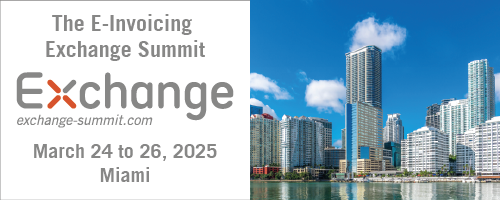On Jan 18, 2018, the ECJ issued its decision in the case C-463/16 (Stadion Amsterdam). This case determines what the VAT rate on composite supplies.
Context: Directive 77/388/EEC — Third subparagraph of Article 12(3)(a) — Reduced rate of VAT — Annex H, category 7 — Single supply comprised of two distinct elements — Selective application of a reduced rate of VAT to one of those elements — ‘World of Ajax’ tour — Visit to the AFC Ajax museum
Article in the EU VAT Directive
Article 12(3)(a) of the Sixth Directive
The standard rate of [VAT] shall be fixed by each Member State as a percentage of the taxable amount and shall be the same for the supply of goods and for the supply of services. From 1 January 2001 to 31 December 2005, this percentage may not be less than 15%.
…
Member States may also apply either one or two reduced rates. These rates shall be fixed as a percentage of the taxable amount, which may not be less than 5%, and shall apply only to supplies of the categories of goods and services specified in Annex H.
Annex H to the Sixth Directive, entitled ‘List of supplies of goods and services which may be subject to reduced rates of VAT’, was worded as follows:
‘In transposing the categories below which refer to goods into national legislation, Member States may use the combined nomenclature to establish the precise coverage of the category concerned.
|
7 |
Admissions to shows, theatres, circuses, fairs, amusement parks, concerts, museums, zoos, cinemas, exhibitions and similar cultural events and facilities |
Facts
The applicant operates the Amsterdam Arena, a multifunctional building complex consisting of a football stadium, a museum (Ajax) and associated facilities. It rents out the complex to third parties for sports matches and music events and there are guided tours of one or two hours, the ‘World of Ajax’ tours, which include a visit to the museum and which visits are not possible outside the tours. For the tours, the applicant (in the period in question 01-01-2001 – 30-06-2005) charges the reduced VAT rate (culture / recreation / entertainment). If that were not correct, the applicant considers that the tours should be equated with this from the point of view of fiscal neutrality. Respondent (Inspector) has not accepted this and states that the general rate applies. The applicant receives an additional assessment. The case has already been visited by the courts of AMS, and after referrals by the HR DH and DB. The first finding by HofAMS that a tour constitutes one service that cannot be split is not disputed. The starting point of the last Court (DB) is therefore that it is not legally possible to apply different turnover tax rates to separate elements that together form one service. And given the Arena’s primary function (sports competitions and musical performances), it is neither a museum nor a facility primarily and permanently set up for recreation / entertainment for which the legislator has defined the low rate. The starting point for the last Court of Appeal (DB) is therefore that it is not legally possible to apply different turnover tax rates to separate elements that together form one service. And given the Arena’s primary function (sports competitions and musical performances), it is neither a museum nor a facility primarily and permanently set up for recreation / entertainment for which the legislator has defined the low rate. The starting point of the last Court (DB) is therefore that it is not legally possible to apply different turnover tax rates to separate elements that together form one service. And given the Arena’s primary function (sports competitions and musical performances), it is neither a museum nor a facility primarily and permanently set up for recreation / entertainment for which the legislator has defined the low rate.
At the referring NL HR, the case focuses on the plea against the judgment of the DB that it is not possible to apply the reduced VAT rate to a concrete and specific element of one service (here: visit to the museum) to fit. The applicant refers to rulings of the CJEU (C-251/05 Talacre, and in cases CIE / FRA I and II) that different rates may apply if this does not affect the proper functioning and functionality of the VAT system. According to the applicant, the latter would not be the case with the tours.
Hof AMS has ruled that the tour is the predominant element of the tour and a visit to the museum is complementary. It is not possible to visit the museum separately and one price is charged for the tour. The parties at the Rb Haarlem already agreed that of the price for the tour (€ 10) 6.50 could be attributed to the tour and 3.50 to the museum.
The HR refers to various judgments in which the CJEU has issued directions on the basis of which an assessment must be made of how a set of supplies for VAT purposes should be treated. Each supply should normally be regarded as distinct and independent, and an operation that economically consists of a single supply should not be artificially separated, in order to preserve the functionality of the VAT system. The question in this case is whether the tour of the stadium and the visit to the museum are so closely related that for VAT purposes they should be regarded as a single supply of services. He notes that the tax treatment of compound services by the CJEU is a highly casuistic matter and therefore puts the following question to the CJEU:
“Is Article 12 (3) (a) of the Sixth Directive to be interpreted as meaning that, where a supply, which is a single supply for the purposes of VAT, is composed of two or more concrete and specific elements for which, if they are considered separate services would be provided, different VAT rates apply, the levying of VAT with regard to this composite service should be based on the different rates that apply to those elements if the remuneration for the service can be split according to an appropriate proportion of the elements ? ”
Source Minbuza.nl
Questions
Must Article 12(3)(a) of the Sixth Directive be interpreted as meaning that where a service, which for VAT purposes constitutes one single service, comprises two or more concrete and specific constituent elements to which, if they had been provided as separate services, different VAT rates would apply, the levying of VAT in respect of that composite service should take place according to the separate rates applicable to those elements if the fee for the service can be split in correct proportion to those constituent elements?
AG Opinion
None
Decision
The Sixth Council Directive 77/388/EEC of 17 May 1977 on the harmonisation of the laws of the Member States relating to turnover taxes — Common system of value added tax: uniform basis of assessment, as amended by Council Directive 2001/4/EC of 19 January 2001, must be interpreted as meaning that a single supply, such as that at issue in the main proceedings, comprised of two distinct elements, one principal, the other ancillary, which, if they were supplied separately, would be subject to different rates of value added tax, must be taxed solely at the rate of value added tax applicable to that single supply, that rate being determined according to the principal element, even if the price of each element forming the full price paid by a consumer in order to be able to receive that supply can be identified.
Source
Similar ECJ cases
- C-41/04 (Levob Verzekeringen and OV Bank) – Software is a supply of services if customization is predominal
- C-111/05 Action bolaget
- C-251/05 Talacre;
- C-384/01 CIE / FRA I and C-94/09 CIE / FRA II;
- ECJ C-88/09 (Graphic Procédé) – Reprographics activities can either be classified as supply of goods or services
- ECJ C-224/11 (BGŻ Leasing sp. z o.o) – Leasing services supplied together with insurance for the leased item
How did countries implement the case?
Newsletters
- International Tax Plaza
- Taxlive.nl
- Lexology
- Taj
- Deloitte
- Tilburg University – The EU VAT Treatment of Composite Supplies – Evolution Trends and Critical Points
- KPMG
- Kluwer International Tax Blog – Composite Supplies under EU VAT: Closer Encounters of the Third Kind?
- Kluwertaxonline















